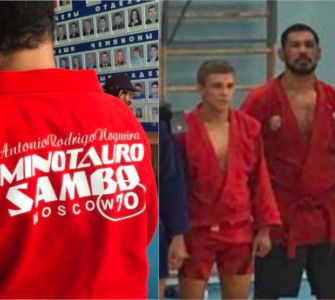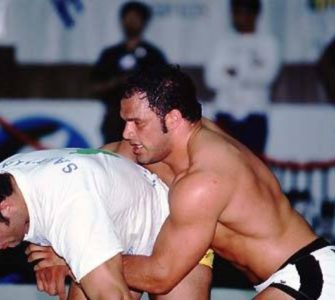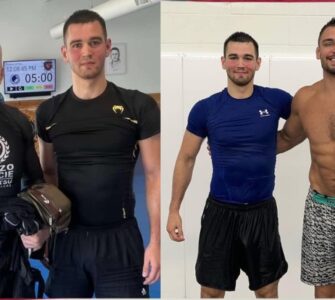It has often been said that you are typically less prone to serious injuries when training and competing in BJJ than in other more high impact martial arts.
Why is that? First of all, there is no striking in BJJ (in sports BJJ at least) so you will not suffer from head trauma, broken nose, broken teeth… You will still get injured but according to injury data (Thanks to Teufelkoenig of Reddit BJJ for sharing the info) obtained from records of on-site medical coverage at 8 statewide BJJ tournaments in Hawaii, USA, between 2005 and 2011, you are still less likely to get injured doing BJJ than in other martial arts.
The researchers looked at the incidence of injuries in BJJ competitions and determined the types and mechanisms of injuries associated with competitive BJJ.
What they found after 6 years of data collection, was that MMA was by far the combat with the highest rate of injury in competition (MMA fight). BJJ competitions do not allow any strikes so that is a big factor. Also the competitions in question did not allow neck cranks or heel hooks.
The injury rates in competitive BJJ were also much lower to a very similar combat sport: Judo, where they had competitions injury rates ranging from 25.2 to 130.6 per 1000 exposures. This is due to the fact that Judo relies much more on throwing techniques than in BJJ.
Mike Piekarski, a Doctor of Physical Therapy, Former MMA Fighter, Brazilian Jiu Jitsu black belt. Follow him on instagram, Talks about injury prevention in BJJ:
In combat sports where the intention is to twist a limb in an unnatural fashion or bludgeon someone’s face injuries are bound to happen, however what is the best way to reduce risk?
A study compared three methods of preventing injury and the effectiveness for each. The training methods included:
1️⃣strength
2️⃣balance
3️⃣stretching
The results show that strength training significantly reduced sport injuries and overuse injuries. Balance training did demonstrate a positive response in injury reduction while stretching did not demonstrate any protection against injury.
Complete Guide To Judo & BJJ Shoulder Injury Prevention
Here are my conclusions based on this article:
1️⃣Strength training is an important addition to a combat athlete’s training schedule. You don’t have to train to be a powerlifter just add 1-2 sessions per week to compliment your skill training.
2️⃣While stretching did not demonstrate a detectable reduction of injury that does not mean that it is not useful for other reasons.
2️⃣There may be specific people who have range of motion deficits who will benefit from stretching to reduce injury but it cannot be generalized to the entire population.
Reference:
The effectiveness of exercise interventions to prevent sports injuries: A systematic review and meta-analysis of randomised controlled trials. (2014). British Journal of Sports Medicine, 48, 871-877.

















